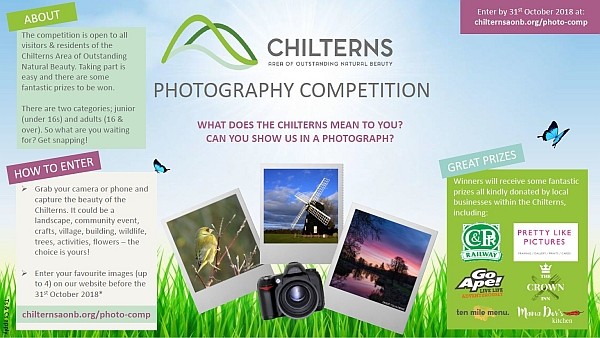The Chilterns AONB is running a photography competition throughout October, 2018. There are categories for Juniors (under 16) and adults (over 16) with prizes to be won. The theme of the competition is:
What does the Chilterns mean to you .
For anyone interested, here’s a link to information on their website: https://www.chilternsaonb.org/

